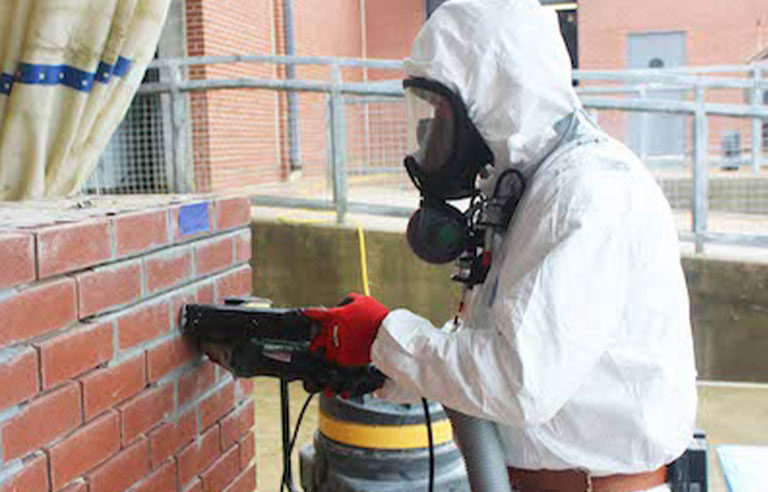
Photo: CPWR
Silver Spring, MD — Protecting workers who handle products containing nanomaterials begins by controlling exposures “like other potential hazards,” CPWR – The Center for Construction Research and Training says in a new fact sheet.
Nanomaterials feature at least one dimension (height, width or length) that’s smaller than 100 nanometers, or thinner than a human hair. The center notes that nearly 1,000 commercial construction products – including cement, adhesives, paints and coatings – contain engineered nanomaterials. Paints and coatings comprise more than half the list.
Although nanomaterials are shown to improve the performance of these products, the dust or mist produced when materials are cut, sanded or sprayed may be ingested or enter openings in the skin.
“Workers sometimes worry that these small particles will slip through filters or respirator cartridges,” CPWR says. “That isn’t the case if the filters and respirator cartridges are used correctly.”
The organization also recommends local exhaust ventilation or wet methods, and amending work methods to help control bystander exposures – a “serious concern” for painters.
CPWR cautions that Safety Data Sheets “often fail to provide adequate information about the types of nanomaterials used in construction products and their hazards.” It adds that OSHA’s updated standard on hazard communication (1910.1200), which went into effect July 19, “should improve” SDSs for nanomaterials “by requiring manufacturers to disclose information about particle characteristics, such as particle size.”
Although OSHA doesn’t have an exposure standard for nanomaterials, NIOSH offers various recommended exposure limits for nanomaterials found in paints and coatings, including carbon nanotubes and nanofibers.
McCraren Compliance offers many opportunities in safety training to help circumvent accidents. Please take a moment to visit our calendar of classes to see what we can do to help your safety measures from training to consulting.
Original article published by Safety+Health an NSC publication


